Today’s Current Affairs: 31st Oct 2023 for UPSC IAS exams, State PSC exams, SSC CGL, State SSC, RRB, Railways, Banking Exam & IBPS, etc
Table of Contents
Rashtriya Gokul Mission:
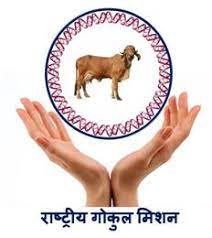
The Gir indigenous cow breed is being promoted under the Rashtriya Gokul Mission.
- Rashtriya Gokul Mission has been implemented for the development and conservation of indigenous bovine breeds since December 2014.
- It is continued under the umbrella scheme Rashtriya Pashudhan Vikas Yojana from 2021 to 2026.
- Objectives:
- To enhance the productivity of bovines and increase milk production in a sustainable manner using advanced technologies.
- To propagate the use of high genetic merit bulls for breeding purposes.
- To enhance artificial insemination coverage through strengthening the breeding network and delivery of Artificial insemination services at farmers’ doorstep.
- To promote indigenous cattle & buffalo rearing and conservation in a scientific and holistic manner.
About Gir Cow:
- It is a dairy cattle breed well-known among milk producers.
- It is known for its milk producing ability, good fertility, heat tolerance, easy maintenance, resistance to diseases, and longevity.
- The name of the breed is derived from its place of origin, the “Gir” forest of Gujarat.
- It has the ability to adapt to the entire central belt and northern and southern stretches.
Nutrient Based Subsidy : Approved

The union cabinet has approved Nutrient Based Subsidy (NBS) rates for the various nutrients of Rabi and Kharif Season for 2022-23.
- For Rabi Season 2022-23: NBS approved for various nutrients i.e. Nitrogen (N), Phosphorus (P),Potash (K) and Sulphur (S)
- For Kharif Season 2023: NBS rates approved for Phosphatic and Potassic (P&K) Fertilizers.
- Under Nutrient Based Subsidy (NBS) Regime fertilizers are provided to the farmers at the subsidized rates based on the nutrients (N, P, K & S) contained in these fertilizers.
- Also, the fertilizers which are fortified with secondary and micronutrients such as molybdenum (Mo) and zinc are given additional subsidy.
- The subsidy on P&K fertilizers is announced by the Government on an annual basis for each nutrient on a per kg basis – which are determined taking into account the international and domestic prices of P&K fertilizers, Exchange Rate, inventory level in the country etc.
- NBS policy intends to increase the consumption of P&K fertilizers so that optimum balance (N:P:K= 4:2:1) of NPK fertilization is achieved.
- This would improve soil health and as a result the yield from the crops would increase, resulting in enhanced income to the farmers.
- The government expects rational use of fertilizers, this would also ease off the burden of fertilizer subsidy.
- It is being implemented from April 2010 by the Department of Fertilizers, Ministry of Chemicals & Fertilizers.
Saras Aajeevika Mela:
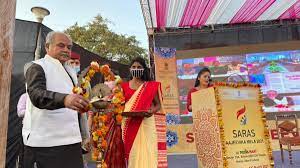
The union Minister of State for Rural Development, Consumer Affairs, Food, and Public Distribution inaugurated the popular SARAS Mela Gurugram.
- Saras Aajeevika Mela is an initiative by the Deendayal Antyodaya Yojana-National Rural Livelihoods Mission (DAY-NRLM) of Ministry of Rural Development.
- Aim is to bring the rural women Self Help Group members under one platform to showcase their skills, sell their products, and help them build linkages with potential market players.
- It is organised by the Ministry of Rural Development and National Institute of Rural Development and Panchayati Raj (NIRDPR)
India’s First Satellite-Based Gigabit Internet Service : Reliance Jio
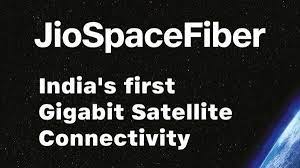
Reliance Jio announced that it had successfully demonstrated India’s first satellite-based gigabit internet service.
- Satellite Internet works similarly to satellite TV.
- It begins with an internet service provider sending satellites into space to orbit around the earth.
- That ISP then relies on a signal routed through one of those satellites in low- or high-Earth orbit and a receiver dish that picks up that signal.
- The receiver is typically placed on your home or business in a spot with as much unobstructed access to the sky as possible.
- You’ll connect a modem to that dish to translate the incoming signal into a workable internet connection.
- The more common method of delivering high-speed satellite internet usually involves constellations of low-Earth orbit (LEO) satellites.
- LEO satellites orbit at a height of between 250 and 2,000 kilometres above the planet.
- The satellite that orbits the Earth communicates using radio waves.
- The most ideal internet access is for users who live in rural areas or live far away from cities or cable or phone offices.
- It uses satellite dish for the two-way communication and does not need telephone cables or lines.
- Compared to other internet options, there are fewer or negligible network outages in case of satellite internet.
Leopard Toby Puffer Fish:
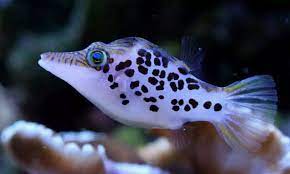
The Leopard Toby Puffer Fish, that roams in the depths of the ocean, has been spotted off the coast of Australia.
- Leopard Toby Puffer Fishis a deepwater reef species that lives in deep water caves and reef slopes at an average depth of 50 to 100 meters.
- Scientific name: Canthigaster leoparda
- It is characterised by clusters of black dots along the flanks of its pale body.
- It is also known as blowfish.
- It is believed to have a thriving population in its deep-sea habitat.
- Puffer fish in general are known for their unique morphological appearance and features, especially their defensive mechanism of inflating and deflating.
- These small sea creatures pump water into their stomachs until they turn into the shape of a ball, larger than their normal body size, to evade predators.
- It is usually found in the waters of the Philippines, Indonesia, Guam, and Micronesia.
- Conservation status
- IUCN: Least Concern
Transfer Of Property Act, 1882:

The Supreme Court recently held that rents receivable by a borrower can be assigned to a lender as an “actionable claim” as per the Transfer of Property Act, 1882 (TPA).
Transfer of Property Act, 1882:
- The TPA is an important piece of legislation that governs the transfer of property between living beings (inter vivos) in India.
- The TPA primarily applies to a transfer of immovable property; however, some sections and clauses of this Act deal with a transfer of movable property as well.
- This Act was first introduced in 1882 and has undergone several amendments since then.
- It outlines the various modes of required transfer and the legal requirements to ensure the transfer is valid.
- The Act applies to all citizens of India who are involved in the transfer.
Transfer of Property:
- According to the law, the transfer of property is defined as the act of a living person transferring property to one or more living persons, either presently or in the future.
- This definition also encompasses companies, associations, or groups of individuals.
- The TPA considers the term “transfer” to include various modes such as sale, mortgage, lease, actionable claim, gift, or exchange.
- However, it does not apply to transfers that occur through the operation of law, such as inheritance, forfeiture, insolvency, or sale through a decree’s execution.
- Additionally, the Act does not govern property disposal through wills or cases related to the succession of the property.
Melghat Tiger Reserve : Tiger Found Dead

A tiger was recently found dead in the Susarda range in the Paratwada division of Melghat Tiger Reserve (MTR) buffer zone.
- Melghat Tiger Reserve (MTR) is located in the Amaravati district of Maharashtra.
- It is located on the southern offshoot of the Satpura Hill Range in Central India, called Gavilgarh Hill.
- It was established as a wildlife sanctuary in 1967 and was declared a tiger reserve in 1974.
- It was the first tiger reserve in Maharashtra.
- It was among the first nine tiger reserves notified in 1973-74 under Project Tiger.
- The name ‘Melghat’ means the confluence of various ‘ghats’ or valleys, as is typical from the landscape of this tiger Reserve.
- The forest is tropical dry deciduous in nature, dominated by teak.
Ejecta halo : Chandrayaan 3
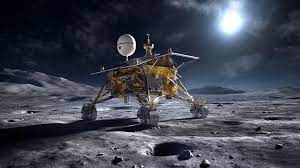
The Indian Space Research Organisation (ISRO) revealed that the “Chandrayaan-3 Lander Module generated a spectacular ‘ejecta halo’ of lunar material.
- The Vikram lander of the Chandrayaan-3 mission landed near the south pole of the moon.
- During the action of descent stage thrusters and the consequent landing, a significant amount of lunar surficial epi regolith material got ejected, resulting in a reflectance anomaly or ejecta halo”,
- Scientists from Indian Space Research Organisation estimate that about 2.06 tonnes of lunar epi regolith were ejected and displaced over an area of 108.4 m² around the landing site
- Ejecta halo is an irregular, bright patch surrounding the lander.
- This discovery sheds light on the behaviour of lunar materials during such events.
- It opens up new avenues for research and understanding lunar geology.
Subsurface Water Ice Mapping (SWIM) Project : NASA
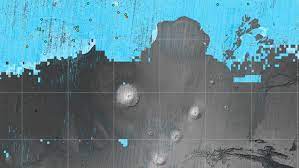
NASA’s Subsurface Water Ice Mapping (SWIM) project released its fourth set of maps.
- Subsurface Water Ice Mapping (SWIM) project aims to locate the best places to access water ice buried under the Martian surface.
- The recently released fourth set of maps is the most detailed and accurate since the project started in 2017.
- It is led by the Planetary Science Institute in Tucson, Arizona, and managed by NASA’s Jet Propulsion Laboratory in Southern California.
- The project uses data from several NASA missions, such as the Mars Reconnaissance Orbiter (MRO), the 2001 Mars Odyssey, and the defunct Mars Global Surveyor.
- SWIM used two higher-resolution cameras on MRO.
- The Context Camera data was used to improve the maps of the Northern Hemisphere.
- For the first time, the HiRISE (High-Resolution Imaging Science Experiment) data was used to provide the most detailed view of the ice’s edge as close to the equator as possible.
- The first phase of the SWIM project, completed in 2019, focused on the northern hemisphere.
- The second phase, completed in 2020, includes the southern hemisphere.




